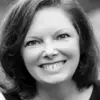Don’t underestimate the importance of scheduling in running a successful cardiovascular practice.
Hold slots for new patients
C. Michael Valentine, MD, an interventional cardiologist at Centra Health in Lynchburg, Va., and 2016-17 vice president of the American College of Cardiology (ACC), is a fan of “hardwiring.” During a session about Medicare’s Merit-based Incentive Payment System (MIPS) at the ACC’s Cardiovascular Summit, he urged attendees to work with vendors to automate quality-metrics documentation into their EHR systems. Hardwire your EHR where possible, and you will save yourself clicks while optimizing MIPS documentation, he advises.
Attendees who crowded into Valentine’s session on improving patient access also heard about the value of hardwiring—in the context of appointment scheduling. Every week, 25 percent of patient appointments should be filled with new patients, he says, and the way to ensure you achieve, or surpass, that goal is using programmed scheduling templates. In other words, every physician’s schedule will include slots reserved for new patients, and no one is permitted to tinker with them.
“New patients are the financial lifeblood of a practice,” says Denise Brown, vice president of Business Intelligence Solutions at MedAxiom Consulting and Valentine’s co-presenter at the ACC session. Past colleagues, Brown and Valentine say each physician should see at least one new patient every day and at least six new patients should be seen in every all-day clinic.
It’s a prescription for a healthy bottom line and for nurturing relationships with referring providers. Every new patient represents $1,600-2,400 in downstream revenue, Brown says.
“Referring practices’ loyalty is fleeting,” Valentine adds. An acceptable wait time for a non-urgent appointment might be two days or two weeks, depending on what your market will bear, but if another practice offers faster access, that is where the referrals will go, he says. (“Getting an appointment with a super-specialist, such as an electrophysiologist, may require longer, depending on availability in your market,” Valentine acknowledges.)
Hardwiring schedules takes more than software, he says. It works best when all of the partners agree to it and when the practice has staff to support a steady stream of new patients while continuing to deliver high-quality care to established patients.
[[{"fid":"22746","view_mode":"media_original","type":"media","attributes":{"height":263,"width":600,"style":"width: 600px; height: 263px; margin: 5px;","alt":" - sample-app-schedule","class":"media-element file-media-original"}}]]
Deploy APPs wisely
Effective use of advanced practice providers (APPs) is essential for growing a cardiology practice, says Valentine. By the time an experienced APP has been with Centra for six months, he or she is expected to see 16 established stable patients per day. The practice monitors the ratio of APPs to physicians and helps script physicians to “talk up the APPs.” Valentine makes sure his patients know that he trusts his team and, therefore, patients can feel confident about care delivered by the practice’s APPs.
It also helps when the cardiologist sets expectations, he notes. When Valentine sees stable patients with an implanted device, he explains that they’ll see a nurse at the six-month interval, a physician assistant at 18 months and him at the two-year mark—and that he’ll always be on hand if a patient’s situation changes.
Managing established care intervals for stable patients is another opportunity for hardwiring. The physicians in each subspecialty should agree on the number of months between visits for patients depending on their disease.
“Remember, you are a cardiology consultant, not a primary care provider,” Valentine says. It’s important that everyone in the practice knows when patients should be referred back to their primary care providers. “The most valuable part of your practice is your cardiology decision making,” he says. “You should not be spending most of your time managing simple hypertension or mild hyperlipidemia.”
“Everyone’s working at the top of their license, right?” asks Brown. APPs should not be used as scribes. She advocates getting beyond the idea of shared visits to more of a tandem approach. At an outreach clinic, for example, a cardiologist and an APP might be working in adjacent rooms, each seeing as many patients as possible.
This is especially important for heart failure clinics, Valentine says. “A true congestive heart failure clinic must be open access, especially on Mondays and Fridays,” he notes. “It will help you keep patients out of the hospital to lower your readmission rates and ER visits.”
Schedule time for urgent visits
Having a plan for providing urgent care is the other pillar that “will make your practice,” Valentine says. At Centra, all of the providers—physicians and APPs—have an hour hardwired into their scheduling template for last-minute, urgent patients who need to be seen. Other practices assign one experienced APP per day to see urgent additions to the schedule.
There are different ways to manage urgent care, says Valentine, but the goal is to avoid sending patients to the ER. No matter how you handle it, “you have to have urgent access and new patient access. It will make your practice more successful in every way.”
